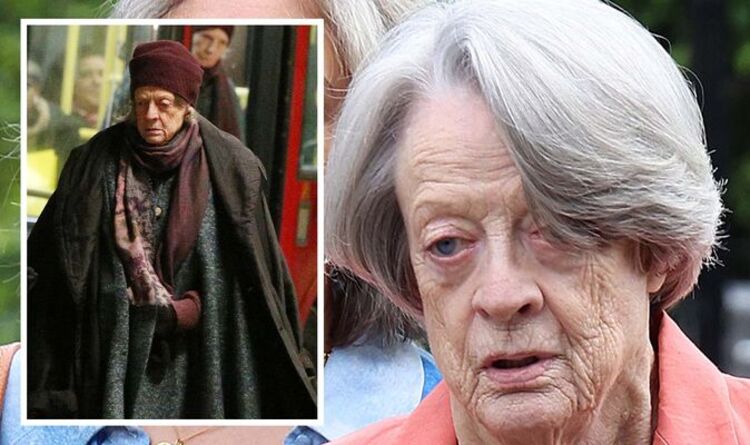Downton Abbey: Maggie Smith stars in film
We use your sign-up to provide content in ways you’ve consented to and to improve our understanding of you. This may include adverts from us and 3rd parties based on our understanding. You can unsubscribe at any time. More info
The beloved Dame Maggie was struck by a condition called Grave’s disease that carries some serious risks with it including heart failure. The actress is perhaps most famous for her roles as Professor McGonagall in Harry Potter and Countess Violet Crawley in the hit series Downton Abbey.
Graves’ disease is an immune disorder closely linked with hyperthyroidism – the overproduction of thyroid hormones.
Thyroid hormones are responsible for things like your heart rate and body temperature but too much of it can cause serious symptoms.
Although it’s not known why, the condition causes the immune system to create an antibody linked with cells in the thyroid gland.
This antibody has the effect of preventing the normal regulation of the thyroid gland – hence causing the overproduction of the hormones, according to the Mayo Clinic.

Dame Maggie was 33 and working on a show called “Lettice” when some severe symptoms of the condition dawned on her.
She had a version of the disease known as Graves’ ophthalmopathy – which affects roughly one third of sufferers of Graves’ disease.
In a New York Times interview, she revealed her eyes became irritated and protruded with puffiness around them, which she said looked “absolutely frightening”.
Talking about the onset of the condition, which followed a cycling injury that broke her arm, she said: “It’s been kind of like a fog of despair, really.
“It was ghastly having a broken arm; ghastly with the play, letting everybody down; and on top of that, I looked absolutely frightening, and didn’t know which way to turn.”
Dame Maggie underwent radiotherapy and optical surgery to treat her condition – and was put into isolation for 12 months during recovery.
Radiotherapy for Graves’ disease
During typical radiotherapy for Graves’ disease, sufferers consume radioactive iodine.
Iodine is naturally used by the thyroid gland as part of the process of producing hormones involved in metabolism.
But when the thyroid gland absorbs the radioactive iodine, the thyroid starts to shrink, lessening symptoms over time, according to the Mayo Clinic.
There is one downside: “Radioiodine therapy may increase your risk of new or worsened symptoms of Graves’ ophthalmopathy,” states the Mayo Clinic.
However, radiotherapy for people with Graves’ ophthalmopathy may be slightly different.
Orbital radiotherapy as it is called uses targeted X-rays over several days to destroy tissue behind your eye.

Dame Maggie underwent surgery for her condition as well, which caused bruising around her eyes.
This involves removing part or all of the thyroid.
According to the NHS, they may choose this option for people with severe eye problems like the actress.
It may also be used if symptoms return after trying other treatments.
Source: Read Full Article
